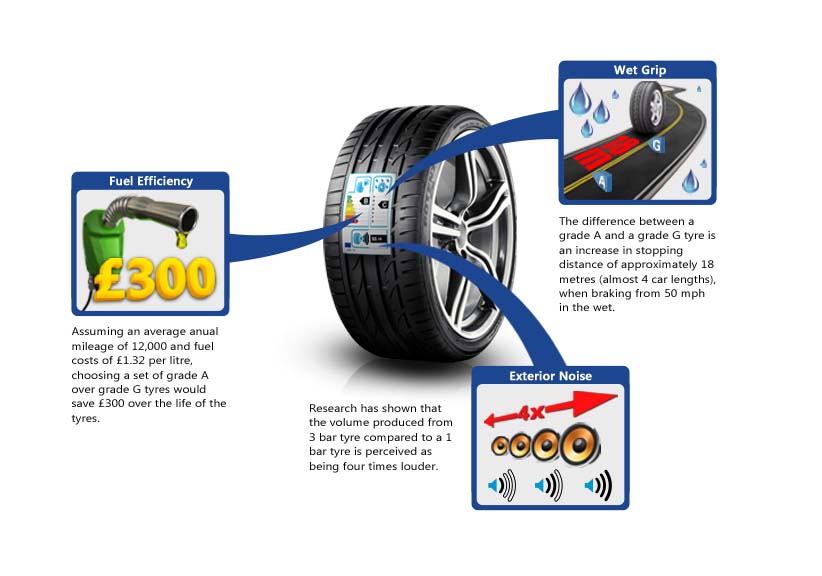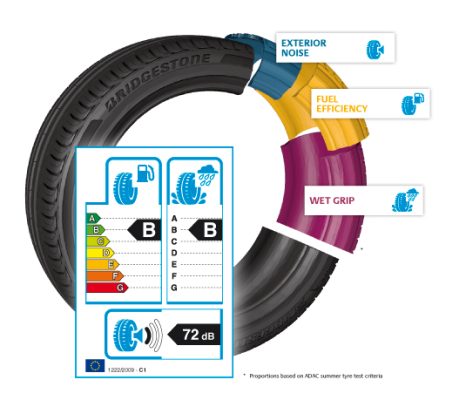This new regulation will bring a major advance in consumer information on tyre safety (wet braking) and the tyre’s impact on the environment (rolling resistance and external noise).
The graphics on the label may be familiar as they are already used for household appliances and more recently for new cars, but what are the benefits for consumers?
Compare fuel economy
Use this diagram to see how a tyre performs on fuel consumption.
Fuel-efficiency is graded from A (most efficient) to G (least efficient).
Save up to £110 or 80 litres of fuel over the life of the tyres. That’s for a car fitted with four A-rated tyres driving at 50mph – it uses 7.5%1 less fuel than with G-rated tyres.
Results can vary with type of car or climatic conditions but the performance gaps are proven.
Compare braking on wet roads
This chart grades a tyre on how well it brakes in wet conditions. Performance scales from A (the safest, stopping in the shortest distances) down to G (least safe, with longest braking distances).
Stop up to 4 car lengths shorter. For a car fitted with four A-rated tyres driving at 50 mph, stopping distance can be up to 18 metres or 30%1 shorter than with G-rated tyres.
Compare external noise level
This diagram shows you a tyre’s noise level in decibels (dB). The 3-wave pictogram tells you how it rates in relation to future European mandatory limits. Tyre noise heard outside the car doesn’t necessarily relate to what you hear inside the car.
3 black waves = Noisier tyre. Level greater than the future limit but complies with today’s noise regulation
2 black waves = Average tyre. Noise level equal to or below future limit by up to 3 dB (A)
1 black wave = Low noise tyre. Noise level 3 dB (A) or more below future noise limit
3dB doesn’t sound much but it is actually double the noise level!
What else matters when choosing tyres?
Labeling is a good start, but other performance factors are just as important for you:
Tyre longevity: a longer-lasting tyre can cost you less in the long run. The right tyre could give you more than a year of extra driving compared to another tyre.
Road handling performance: 25% of accidents are on bends.
Dry braking performance: 70% of accidents occur on dry roads.
LinkedIn: https://www.linkedin.com/company/finixx-global-industry-co-ltd-?trk=company_logo





